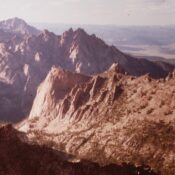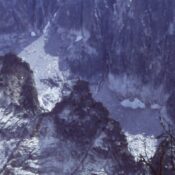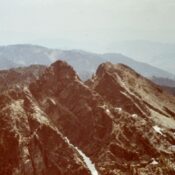This peak is not in the book. Published February 2024 This peak is the high point on lengthy Railroad Ridge in the White Cloud Peaks. It towers over Crater Lake (8,919 feet) to its west but sits below Railroad Peak (10,848 feet) to its south-southwest. An old jeep track gets you close to the top. USGS Livingston Creek Access Big … Continue reading
Search Results for: a cl

This peak is the highest point of the massif of a peak that includes the famous Elephants Perch (its west summit). The Elephants Perch is discussed in the book on Pages 176-180. This mountain was named Saddleback Mountain by the early settlers. Its name is shown on old maps. However, the name was not adopted by the Board of Geographic … Continue reading
This peak is not in the book. Published December 2023 Peak 8184 is a new ranked summit in the Bear River Range, thanks to recent updates from LiDAR. It was previously an unranked hump (Point 8176 on the map) that is located above Moonlight Meadow. Peak 8184 sits on the Bear Lake/Franklin County line. It is most easily climbed from … Continue reading

This formation is not in the book. The name Mayan Temple mistakenly shows up as Japan Peak in the book. Ray Brooks explained the source of the confusion which dates back to 1972. Ray reports : “ In September 1972, we did make a nice first ascent of a pinnacle on the ridgeline just northeast of Japan Peak. We named … Continue reading

Climbing and access information for the La Fiamma formation is discussed on Pages 196-197 of the book. The elevation and prominence figures are estimated because the formation is not shown on the USGS topo. Published December 2023 La Fiamma is reportedly an impressive rock spire located on the southwest shoulder of Packrat Peak. It was first climbed by Fred Beckey, Steve … Continue reading

Climbing and access information for this peak is on Page 103 of the book. Published December 2023 Twin Imps are a multi-summited peak located on the main Seven Devils crest south of the Devils Throne. The north summit is the high point. The route information in the book is based on the first ascent by the Mazamas in 1963. The … Continue reading